院士风采
2011-04-13
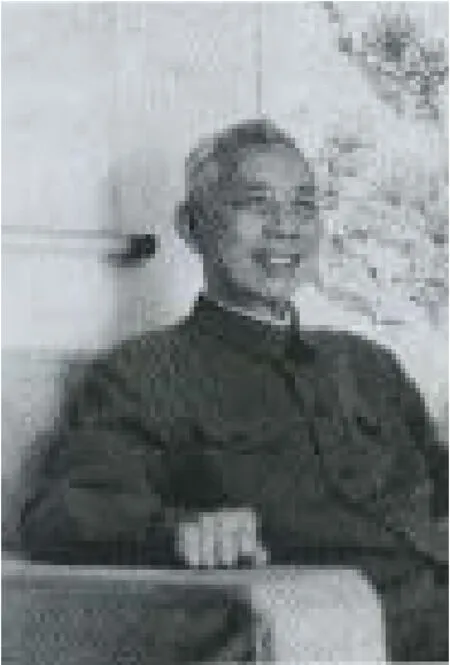
许 杰1901.01.29~1989.07.11
古生物学家、地质学家。安徽广德人。1925年毕业于北京大学地质系。地质矿产部副部长、中国地质科学院院长。毕生研究古代重要化石门类(笔石),确立了中国南方含笔石地层划分对比的基础,对中国南方奥陶系、志留系笔石相地层时代划分起了先导作用。对三角笔石生物体进行微细结构研究,解决了国际古生物界百年来未能解决的三角笔石形态结构、分类及演化方面的问题。通过早年的地质和矿产调查,尤其是50年代以来担任地质部副部长、中国地质科学院院长等领导职务,对中国地质科技事业的发展作出了积极的贡献。
1955年被选聘为中国科学院院士(学部委员)。
Paleontologist and geologist. Born in Guangde, Anhui Province.Graduated from Peking University in 1925. Vice miniter, Ministry of Geology and Mineral Resources, and president, Chinese Academy of Geological Sciences.
Xu spent his whole life on the study of graptolite, a group of important fossils in Paleozoic, and made foundational contributions to the division and correlation of graptolite-bearing strata in South China, especially creating a precedent of dividing Silurian-Ordovician graptolitic facies strata. He studied fine textures of Trigonograptus and solved the problem of feature, classification and evolution of fossils, which puzzled the world paleontological circle for 100 years.His studies on geology and mineral resources and his position as the vice minister enabled him to make a positive contribution to China’s geological undertakings.
He became Member of the Chinese Academy of Sciences in 1955.
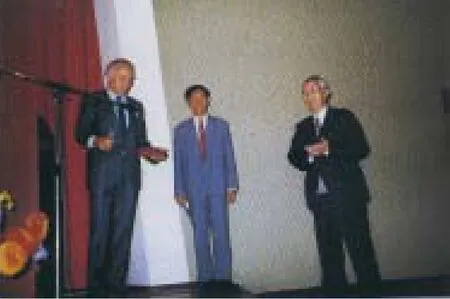
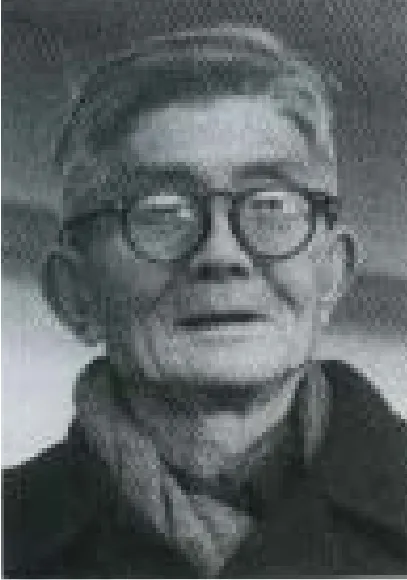
孙云铸1895.11~1979.01.06
古生物学家、地质学家。江苏高邮人。1920年北京大学地质系毕业。1927年获德国哈勒大学地质系理学博士学位。中国地质科学院副院长。中国古生物学、地层学的奠基人之一,早期研究三叶虫化石及中国古生界,1924年出版的《中国北部寒武纪动物化石》是中国学者第一部古生物志。对笔石、头足类、海林檎、珊瑚等化石开展研究,取得重要成果。40~60年代,全面论述了划分地史时代的三个原则,全面探讨了中国古生代的海侵及生物分区等基础理论问题,为地层古生物的发展做出重要贡献。他为中国的地质事业培养了大批专门人才。
1955年被选聘为中国科学院院士(学部委员)。
Paleontologist and stratigrapher. Borm in Gaoyou, Jiangsu Province. Graduated from the Department of Geology, Peking University in 1920. Received Ph.D. from Halle University, Germany in 1927. Professor of paleontology, Peking University, chairman,Department of Geology, Geography and Meteorology of the Southwest Associated University from 1937 to 1946, chairman, Department of Geology, Peking University, superintendent, Education Bureau under the Ministry of Geology, vice president, Chinese Academy of Geological Sciences.
Sun was one of the most well-known paleontologists and stratigraphers and one of the founders of the palaeontological and stratigraphical sciences in China. His main research field was in trilobite paleontology and Paleozoic stratigraphy. But his interests and contributions extend much beyond these, covering a scope from nearly all branches of invertebrate paleontology to stratigraphic principles and geotectonics. He was also enthusiastic in academic activities. He took an active part the founding of the Geological Society of China in 1922 and the Palaeontological Society of China in 1929. He was elected more than once president of the two scientific organizations. In the international activities, he was among the earliest to represent China and to make the acquirement of Chinese geologists known to the world.He had been abroad several times and twice as the representative of China to the International Geological Congress.
He became Member of the Chinese Academy of Sciences in 1955.地质学家、古生物学家。陕西华县人。1923年

杨钟健1897.06.01~1979.01.15
毕业于北京大学地质系。1927年获德国慕尼黑大学哲学博士学位。中国科学院古脊椎动物与古人类研究所研究员、所长。20年代,他的《中国北方啮齿类化石》(德文)是中国人撰写的第一部古脊椎动物学专著,从而在中国创立了这一学科。1928年负责周口店的发掘工作,此间发生了发现中国猿人第一颗头盖骨的划时代事件。1937年以后,在云南禄丰领导发掘工作,获大批恐龙及原始哺乳类化石。1949年后,与裴文中等筹建古脊椎动物研究室,为后来的中国科学院古脊椎动物与古人类研究所的建立奠定了基础。
1955年被选聘为中国科学院院士(学部委员)。
Geologist and paleontologist. Born in Huaxian, Shanxi Province.Graduated from the Department of Geology, Peking University in 1923.Received Ph. D. from Munich University, Germany in 1927. Research professor and director, Institute of Vertebrate Paleontology and Palaeonthropology, Chinese Academy of Sciences.
Yang’s “Rodent Fossil in North China” ( in German ) was the first treatise on vertebrate paleontology written by Chinese scientists in the 1920s and he established this discipline in China. In 1928, he presided over the excavation at Zhoukoudian, where the first skull-cap of Chinese ape-man was discovered in this period which is of epochmaking significance. After 1937, he presided over the excavation in Lufeng, Yunnan Province and obtained a lot of fossils of dinosaurs as well as mammalian. After 1949, collaborated with Pei Wenzhong and others, he prepared and established the Division of Vertebrate Paleontology, which was the predecessor of the Institute of Vertebrate Paleontology and Palaeonthropology, Chinese Academy of Sciences.
He became Member of the Chinese Academy of Sciences in 1955.
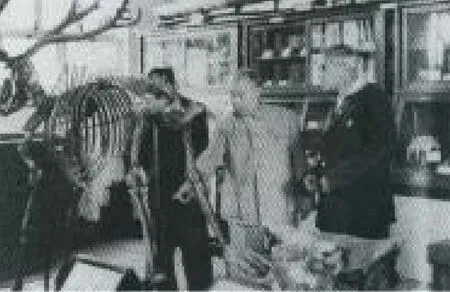
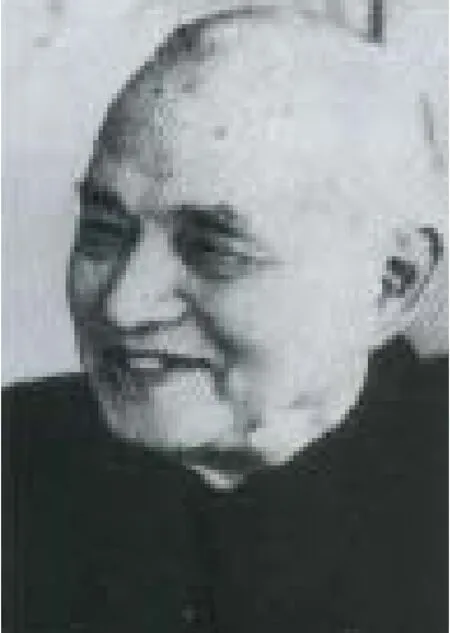
李四光1889.10.26~1971.04.29
地质学家。蒙古族。湖北黄冈人。1919年和1927年分别获英国伯明翰大学硕士和博士学位。地质部部长、中国科学院副院长、中国科学技术协会主席。中国地质学会创始人之一。早年对蜓科化石及其地层分层意义有精湛的研究。提出了中国东部第四季冰川的存在。用力学观点研究地壳运动及其与矿产分布的规律,建立了新的边缘学科“地质力学”和“构造体系”概念。提出新华夏构造体系三个沉降带有广阔找油远景的认识并为大庆、胜利等油田的发现所证实。开创了活动构造研究与地应力观测相结合的预报地震途径。晚年发表的“天文、地质、古生物资料”对我国学科打交叉的倡导产生了深远影响。对中国地质教育、地质科学和地质事业的发展作出了巨大的贡献。
1955年被选聘为中国科学院院士(学部委员)。
Geologist. Born in Huanggang, Hubei Province. Mongolian nationality. Received M.Sc and D. from Birmingham University,UK in 1919 and 1927, respectively. Minister, Ministry of Geology,vice president, Chinese Academy of Sciences, chairman, Chinese Association for Science and Technology, and one of the founders of the Geological Society of China.
In his days, Li made intensive studies on fusulinides from the viewpoint of mechanics and stratigraphics of China. He discovered the presence of Quaternary glaciation in China. His studies on the crustal structure and crustal movement were based on the mechanics consideration and led to the concept of “tectonic system” such as the Neocathaysian and Cathaysian systems in China and the establishment of a new discipline “ geomechanics”. With the application of geomechanics, he found three trending belts occurring within the territory of China. This led to the discovery and successful exploration of gas and oil fields in Daqing and Shengli regions as well as the distribution of other mineral resources. With the combination of detecting active tectonic systems and measurements of stress fields in earth crust, he made earthquake predictions possible. In his late years,he published “Astronomy, Geology, Paleontology” which produced penetrating influence on the overlapping fields of different scientific disciplines. He contributed greatly to the development of geological education and geoscience in particular and geology in general.
He became Member of the Chinese Academy of Sciences in 1955.
